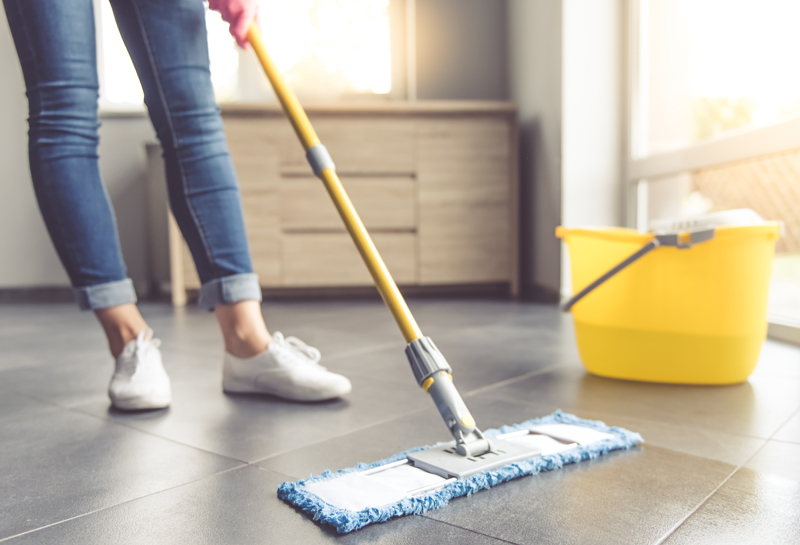
[vc_row css=”.vc_custom_1545636460425{margin-top: 30px !important;}”][vc_column][vc_column_text]
After a thrilling holiday with your family, you can’t wait to go home and relax in your own bed. But when you pull into your driveway, you instinctively know something went wrong while you were away.
The grass squishes under your step, and the basement windows look as though they’ve been splattered with brown paint. Your heart sinks as you open the door and peek down the stairs. Several centimetres of murky water now cover your basement flooring.
When your home floods after a burst pipe or a severe storm, you might panic and worry about how you’ll recover. But if you act quickly and follow these simple steps, you can minimise damage to your property.
1. Assess the Damage
Before you ever pick up a bucket or grab a towel, carefully consider your safety.
Floods can compromise your home’s structural integrity, increasing the likelihood of collapse. Furthermore, any exposed or damaged wires could shock you when you splash in the leftover puddles. And since flood water often brings a host of bacteria, mould and similar debris, you could put your health on the line whenever you inhale.
If your flooded home looks potentially hazardous or if sewage washed into your home, call in a remediation crew to handle the job for you.
2. Assemble Your Equipment
If the flooding looks minor, with only a few small puddles here and there, feel free to handle the clean up on your own. Keep in mind that your job will go more smoothly and more quickly when you have the right equipment on hand, so gather the following materials:
- Skip bin
- Face mask
- Fans
- Dehumidifiers
- Sturdy gloves
- Laundry detergent
- Bleach, Borax or Vinegar
- Safety glasses
- Clean wash water
- Towels
- Buckets
- Torch
If you have several centimetres of water to remove, you may need more specialised equipment to clean your home. Shop vacuums work well on a small scale, but a sump pump works better during bigger emergencies.
3. Cut the Power and Remove the Water
Once you’ve put on your safety gear and feel ready to tackle the mess, turn off the individual circuits and shut down the main breaker. If the breaker is in your flooded basement and you can’t reach the panel safely, call your local power company and ask for an emergency shutoff.
When electricity no longer poses a threat, use towels, buckets, vacuums and pumps to remove the remaining water in your home. Turn on fans and dehumidifiers to speed the drying process, and open windows to promote air circulation.
4. Remove Soaked Carpet, Drywall and Damaged Items
Any items that soak for several hours (or days) could harbour dangerous moulds and bacteria. Carpet and carpet padding, in particular, tend to stay damp long after other materials have dried, so remove them as soon as possible and take them to a cleaning expert or toss them in your skip bin.
Of course, even the best experts cannot properly clean porous building materials (such as drywall and sheetrock). And if left untreated, mould will grow inside the wall cavities. You may have to cut away damaged drywall and add it to the bin to ensure your family stays healthy.
Similarly, insulation also takes too long to completely dry, and it often provides a food source for bacteria. So throw any wet or damp insulation into your skip bin as well.
5. Rinse, Wash and Repeat
After you’ve removed and dried larger items, you’ll have more space to clean and scrub your home. Gather any smaller fabrics (clothing, bedding and drapery) and wash them in cool water with a powdered detergent to prevent stains from setting. Then, re-launder fabrics in the hottest water available with bleach.
Next, combine warm water with bleach, borax or vinegar (whatever you have on hand). These common cleaning agents will kill mould and keep mould from releasing spores into the air. Scrub every contaminated surface with the mixture and let it sit for a few minutes to loosen the dirt before wiping it away.
Once you’ve cleaned (and possibly re-cleaned) every centimetre of your home, hire a professional to inspect your home for damage and mould growth. If you’ve followed this step and all the steps previous, your inspector should give you permission to move into your home once more.
[/vc_column_text][/vc_column][/vc_row]
Backyard Bins Team
“ [rcblock id="2165"]”